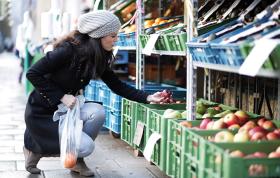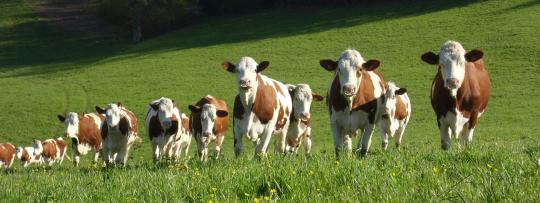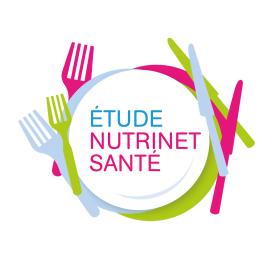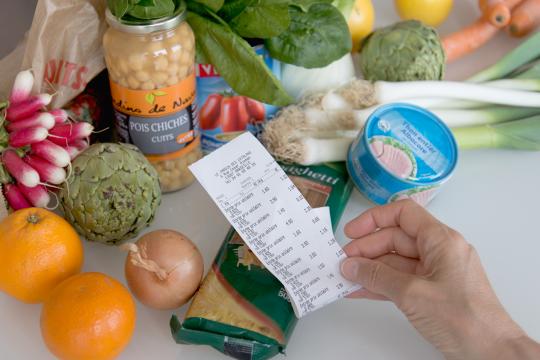Ressources dossier
Food, Global HealthSustainable & healthy eating, the basics
Published on 17 January 2023
If we only ate fatty and sweet products whose production is low in greenhouse gas (GHG) emissions, our diet would have a low impact on the environment, but a deleterious one on our health. If we were to cut out soft drinks, cured meat products and crisps and eat mainly fruit, vegetables, dairy products and fish, our diet would be healthy, but socially difficult to accept by a large part of the population. And if there were a diet that was at once healthy, more environmentally friendly and acceptable, it would still have to be economically accessible to all.
Sustainability, beyond environmental issues

According to the Food and Agriculture Organisation of the United Nations (FAO), the sustainability of a diet is based on several criteria: it must have a low impact on the environment; it must contribute to the food and nutritional security of the population; it must be culturally acceptable, economically equitable and accessible. However, the cultural, economic, social and agricultural situations are so diverse around the world that it is impossible to define “the” diet that could be adopted by the whole world population. There is thus a variety of conceivable and desirable developments in our diets.
As far as France is concerned, the State relies on the nutritional recommendations issued by the French Agency for Food, Environmental and Occupational Health & Safety (ANSES) in order to establish the National Nutrition and Health Programme (PNNS), which supports public policies aimed at improving the nutritional and health situation of the population. The main points of this plan are: to reduce our consumption of sugary products and drinks, cold cuts and meats (except poultry); to control the consumption of highly processed foods; to consume fish from sustainable stocks; to emphasise local and seasonal foods; to increase our consumption of plant products of good nutritional quality such as whole grains, legumes, fruit and vegetables... These recommendations allow us to move towards a healthier diet, but do they allow us to have a lesser impact on the environment? To answer this question, INRAE researchers have studied the diets of the French.
The environmental impact of diets
Rebalancing our intake of animal and plant proteins is one of the keys to transition.
Studies (INCA 3 2014-2015, ANSES collective expertise 2017 and CREDOC 2013) on the French population show that the 20% of people with the best diet from a nutritional point of view, consume less meat, cured meat products, sweetened and alcoholic drinks, and more plant products than the average. By doing so, their diet emits 18% less GHGs and is therefore more environmentally friendly.
To go further, the researchers used modelling to design a diet that meets the nutritional recommendations and further reduces GHG emissions. With a greater reduction in animal products, an increase in plant products and a decrease in the consumption of hot beverages (like coffee and tea), the researchers found a diet that emits 30% less GHGs than the current average diet. These two diets, the observed and the modelled, cost less than the current diet (€6.20 and €6.40 per day per person, instead of €6.70) but are still unaffordable for part of the population –bearing in mind that the average French budget stands at between €5 and €6 per day per person, and around €3.50 for the lowest income households. Moreover, the question of their social and cultural acceptance remains, particularly for the reduction in meat consumption.
What place for meat?

Meat consumption is very uneven around the world (an African consumes 6 to 10 times less meat than a Westerner, and an Asian 2 times less), but it is projected to increase by 60% by 2050, due to the combined increase in the world’s population and the purchasing power of fast-growing countries. While animal products provide all the amino acids we need and are the main source of vitamin B12, iron and zinc essential during pregnancy and growth, excessive consumption of meat, particularly red meat, can have adverse health consequences. Its saturated and monounsaturated fatty acids can lead to cardiovascular disease. Recent studies conducted at the TOXALIM Research Centre in Food Toxicology have shown the link between excessive consumption of red meat or cured meat products and colon cancer.
Moreover, livestock farming, particularly ruminant farming, is responsible for a portion of GHG emissions. Indeed, at the global level, direct and indirect GHG emissions from livestock farming are estimated at 14.5%1 of total emissions linked to human activities, the equivalent of 7.1 gigatonnes of CO2 each year. In addition, animal welfare, a growing concern in society, calls into question certain production practices in industrial livestock farms. But while it is undeniable that a reduction in meat consumption is in the interest of the environment, livestock farming also has its virtues..
1.Direct and indirect emissions related to food production, energy consumption, enteric fermentation, etc. Source FAO: www.fao.org/3/i6345f/i6345f.pdf
Livestock farming allows the use of uncultivable agricultural land as temporary or permanent grasslands (more than 5 years without cultivation) which play a major role in storing carbon in the soil. Animals also enable the valorisation of co- and by-products of the plant sector that cannot be consumed directly by humans, or provide organic fertilisation of the land. Furthermore, if everyone adopted a diet based solely on plant products, the increase in demand for these products would proportionally increase the need for cultivated land and probably the quantity of pesticides used. The recommendations of the World Health Organisation (WHO) therefore call for a rebalancing of intakes between animal and plant products. In France, this would mean changing our ratio of animal and plant protein consumption from 65/35 to 50/50 on average.
Sustainable eating means thinking food systems
Consumption should not be thought of separately from agricultural production. A sustainable diet starts with environmentally friendly production. “It’s a virtuous circle, producing better allows us to eat better, and eating better allows us to stimulate demand for better production”, says Sophie Nicklaus, an INRAE specialist in eating behaviour at the Centre for Taste and Feeding Behavior (CSGA) in Dijon.
Food systems are responsible for almost one third of global greenhouse gas emissions.
Today, our food systems (including agricultural practices, manufacturing processes in the agrifood industry, transport methods and distance travelled by products) have an impact on our environment, such as water and soil pollution, GHG emissions, deforestation and loss of biodiversity, as well as on our health, since a polluted environment and unsustainable environmental practices will increase our exposure to various contaminants.
... and adopting more agroecological practices

On the fields, it is a matter of developing more environmentally friendly models. Agroecology is a good example. The principle: agricultural practices (like biocontrol, winter cover crops, intercropping and permanent grasslands) that rely on the functionalities offered by ecosystems with the aim of reducing GHG emissions, limiting the use of synthetic inputs and preserving natural resources. Organic farming, characterised by the absence of synthetic inputs and antibiotics, is also a good way of greening agricultural practices with the added bonus of beneficial impacts on health. Recent research based on the Bio NutriNet study, which followed 69,000 people over 7 years, showed a 25% reduction in the risk of cancer (all types) in regular consumers of organically produced food, compared to those who consumed it less frequently. Research is ongoing in order to explain these results. For Emmanuelle Kesse-Guyot, an INRAE epidemiologist with the Nutritional Epidemiology Research Unit (UMR EREN), several leads need to be explored: “potentially higher levels of certain micronutrients (antioxidants, carotenoids, polyphenols, vitamin C or more beneficial fatty acid profiles) in organic food, or the presence of synthetic pesticide residues, more frequently and in higher doses, in conventionally farmed food compared with organic food.”
At this stage, these are only hypotheses, as researchers are still assessing the potential relationship between the consumption of organic products and health, as well as the links between pesticides and metabolic diseases (such as diabetes, obesity and hypertension) or cancer. What is certain, however, is that at the individual level, those who consume large amounts of organic products have adopted a diet that emits far less GHGs as they tend to have a more plant-based diet than other consumers. However, converting all agricultural land to organic agriculture would also have its limits: with lower yields, feeding the planet with organic agriculture raises the question of the availability of more arable land.
Eat less, locally and seasonally?
While studies show that reducing the consumption of animal products has the greatest potential to reduce GHGs, complementary actions can also contribute. Eat less? The studies cited above indicate that Western diets should be reduced by 250 kcal to 3,000 kcal per day per person, including waste (i.e. 1,850 to 2,000 kcal actually consumed). Halving consumer food waste would reduce GHG emissions by about 5% on a global scale.
Cutting consumer food waste in half would reduce global GHG emissions by 5%.
As for the very popular “eat local”, it is not necessarily synonymous with sustainability. Indeed, although transport by air does increase the carbon impact of a food item, it represents only 1% of the fruit and vegetable import tonnage, and has therefore a limited overall impact. “If we have to point the finger at a problem with food transport, we should look at the distance between the place of purchase and the home, which can account for up to 40% of a food’s carbon impact”, says Nicole Darmon, an epidemiologist at the Montpellier Interdisciplinary Center on Sustainable Agri-food Systems (social and nutritional sciences) (MoISA). Thus, going to pick up strawberries from a “local” producer by car is not necessarily more sustainable than eating an imported product. Eat seasonally? Again, it all depends on what you are looking at. For Emmanuelle Kesse-Guyot, the most important thing is to produce in season in order to limit the use of heated greenhouses, but there is nothing to stop you from eating in winter a tomato coulis produced in summer!
Food accessible to all

Does eating healthy and sustainable food have a cost for the French consumer? For Nicole Darmon, the impact would appear to be small. On the one hand, reducing meat purchases tends to bring down costs, especially as it represents the largest item in the food budget of the French. On the other hand, eating more fruit and vegetables can increase costs, even with the less expensive legumes. But Nicole Darmon warns: “it is very difficult to have a healthy and sustainable diet below €3.50 to €4 per day per person”.
It is very difficult to have a healthy and sustainable diet below €3.50 to €4 per day per person.
Furthermore, when people are constrained by their budget, they tend to choose foods that provide cheap calories, such as refined cereal products and fatty and sweet products. These products –typically crisps and biscuits– are poor in essential nutrients and are often loaded with sugars or salt, which, when consumed in excess, make them harmful to our health. On the other hand, they are convenient, comforting and have the advantage of being wasted less...
Eating more sustainably undoubtedly implies that our diets should become more plant-based. But beware, reducing the share of animal products will only serve the sustainability and quality of our diets if it is to the benefit of a wide variety of plant-based products of good nutritional quality while at the same time bringing about conceivable changes for the consumer in terms of habits and budget.
Even though eating more sustainably seems to be within the reach of Western countries such as France, it requires a strong political will to make transitions at all levels: production, processing and consumption.
Promising legumes

At present, legumes are good candidates for solving the complex equation of a healthy and sustainable diet: lentils, broad beans and dry beans for human consumption; peas, horse beans, clover and alfalfa for animal feed. Both good for our health and the environment, they are an essential link in the transition to sustainable diets.
As a source of protein (20 to 40% depending on the species, compared with 10 to 13% in wheat, for example), legumes allow us to cut down on our consumption of meat and reduce the need to import soya for animal feed. In addition, legumes have agronomic and even climatic advantages. Integrated into crop rotations, they can act as a nitrate trap and fix nitrogen for the following crop. They help to break the cycle of diseases, pests and weeds, and thus to use less pesticides on a crop rotation scale. Despite these many advantages, legumes account for only 4% of the utilised agricultural area in France and the consumption of dried pulses (such as lentils, beans, broad beans and chickpeas) has dropped to a quarter over the past 20 years to reach very low levels in France (2 kg per person per year in 2020 according to Agreste). How can this disenchantment be explained? As far as consumption is concerned, one can blame the time they can take to cook, the digestive disorders they may cause or an exacerbated taste of the “green note” type. They are also victims of prejudice: studies show that dried pulses are associated with a vegetarian diet and are not perceived as a source of protein but rather as an accompaniment to meat. On the production side, their high sensitivity to climatic stresses, such as frost or drought, and their low resistance to biological pests lead to uncertain yields. Neglected for years, the value-added chains are today relatively unstructured. Logistics are complex and costly for small volumes. These productions are thus seen as economically unattractive in the absence of public aid.
Weaknesses that researchers are trying to overcome, from production to processing and consumption. They are, for example, developing new pea and horse bean varieties that are more resistant to drought, frost and disease, as well as new legume-based products. This objective is directly supported by the French government with the “plant protein plan” launched in 2020, which aims to double the agricultural area used for crops rich in plant proteins (like soya, peas, dried pulses, alfalfa and feed legumes) over a 10-year period, to reach 8% of the utilised agricultural area at national level.
-
Élodie Regnier / Anaïs Bozino
(Send email)
Author / translated by Alessandra Riva
Communications Department
